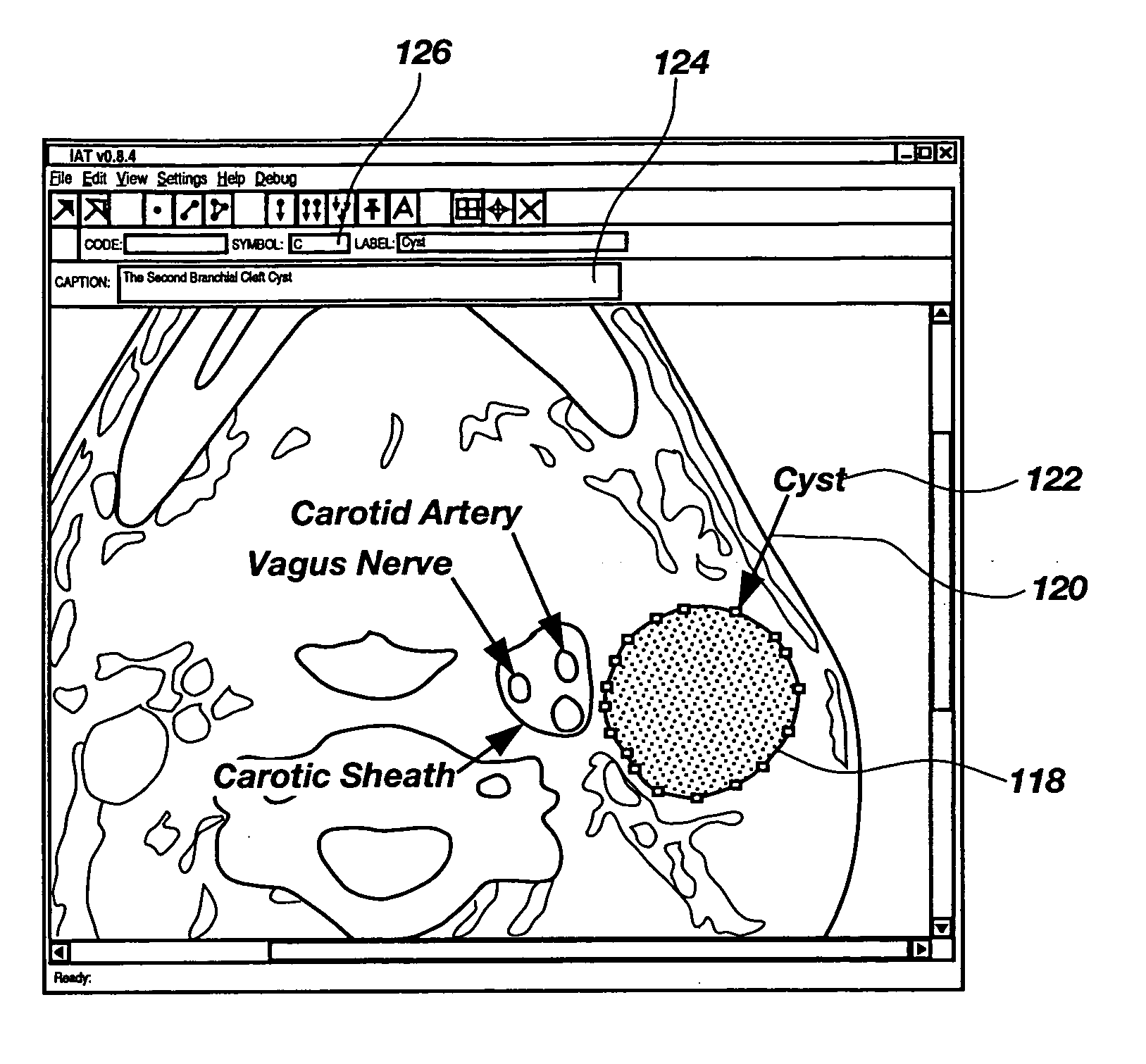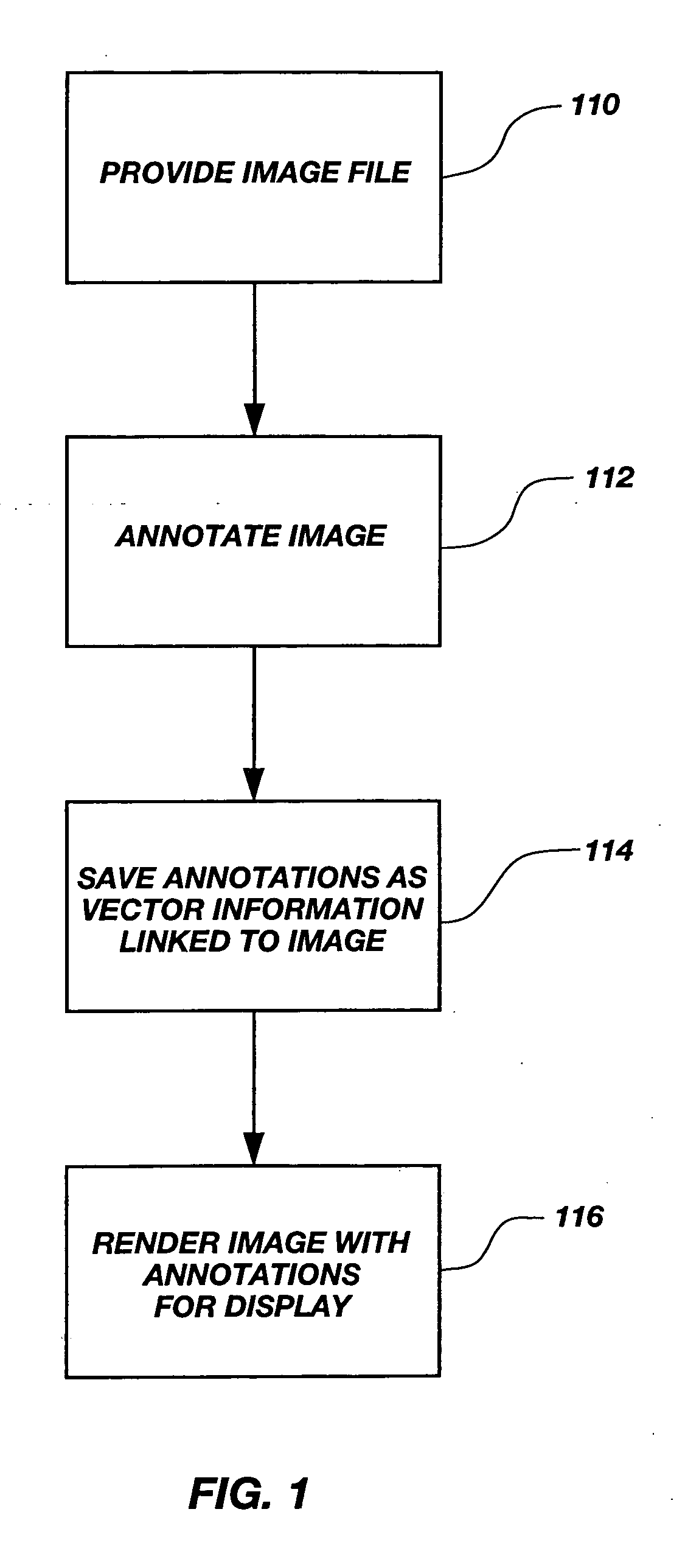System and method for visual annotation and knowledge representation
a visual annotation and knowledge representation technology, applied in the field of visual annotation and knowledge representation, can solve the problems of large drawbacks of rub-on labels, high cost, and complicated, and achieve the effects of reducing the number of images
- Summary
- Abstract
- Description
- Claims
- Application Information
AI Technical Summary
Problems solved by technology
Method used
Image
Examples
example 1
[0091] A neurosurgeon reviews a volume rendered set of MRI data that indicates the patient has an aneurysm. The neurosurgeon visually annotates a region of interest and adds a clinical note that is linked to the region of interest. The neurosurgeon identifies a previously undetected aneurysm and marks that region for consult with the neuroradiologist. The annotated image set may be sent to, or checked back into radiology imaging system with the annotations and added expert content linked to the three-dimensional model. The surgeon calls the radiologist for a consult on the second aneurysm prior to sending the patient to surgery. The radiologist adds a clinical note that confirms the additional diseased region of interest without destroying the original information that was added by the surgeon. The neurosurgeon consults with the patient, outlining the second aneurysm prior to the surgery. Other neurosurgeons and radiologists, with the appropriate permissions, may check out the visua...
example 2
[0092] An investigator proceeds with an experiment which involves staining serial sections of a primate retina with three neurotransmitters to determine what cells interact with the neurotransmitters and the levels of interaction. The scientist discovers that one neurotransmitter affects all cell types and proceeds to cut serial sections of the tissue and combine them into a three dimensional surface rendering that maps the neurotransmitters and cells that are affected. The scientist visually annotates one of the synaptic ribbons that is formed within the secondary neuron framework and adds an expert interpretation of the synaptic interaction. The scientist sends the image to a colleague for an additional expert opinion of the structures. The colleague makes visual notes on the image set (without destroying or altering the underlying image set). The visual note is comprised of lines, polygons and points with associated text-based symbols and descriptions that outline an area on the ...
example 3
[0093] A plant biologist receives digital electron photographs / images (EM) of a stained tissue sample from a diseased plant. The plant biologist draws shapes (polygons, lines or edges, and points), pointers and textual symbols and descriptions with the visual annotation technology to indicate a region of interest and communicate expert understanding / interpretation of the EM images. This annotated image may be sent to, or checked back into a cataloging system at an agricultural center to be viewed by other individuals. Other plant biologists, with the appropriate permissions, may check out the image and visual annotation set for review as reference or further multi-user annotation. The annotated image may also be used for print output for a publication or sent electronically (email, Internet) to other experts for consultation. Such visual assets may later be used for time-based comparisons of the same area or as supporting material in a legal proceeding.
PUM
 Login to View More
Login to View More Abstract
Description
Claims
Application Information
 Login to View More
Login to View More - R&D
- Intellectual Property
- Life Sciences
- Materials
- Tech Scout
- Unparalleled Data Quality
- Higher Quality Content
- 60% Fewer Hallucinations
Browse by: Latest US Patents, China's latest patents, Technical Efficacy Thesaurus, Application Domain, Technology Topic, Popular Technical Reports.
© 2025 PatSnap. All rights reserved.Legal|Privacy policy|Modern Slavery Act Transparency Statement|Sitemap|About US| Contact US: help@patsnap.com



